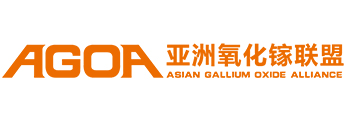

【Others Papers】Co-Doping Effects on the Electronic and Optical Properties of β-Ga₂O₃: A First-Principles Investigation
日期:2025-06-26阅读:320
Researchers from the Xi`an University Of Science And Technology have published a dissertation titled "Co-Doping Effects on the Electronic and Optical Properties of β-Ga2O3 A First-Principles Investigation" in Materials.
Abstract
To meet the demands for functional layers in inverted flexible perovskite solar cells, high-performance formamidinium-based perovskite solar cells, and high-performance photodetectors in future applications, it is crucial to appropriately reduce the bandgap of third-generation wide-bandgap semiconductor materials. In this study, we first optimized doping sites through Ag-Cl and Ag-S configurations to establish stable substitution patterns, followed by density functional theory (DFT) calculations using the Generalized Gradient Approximation with the Perdew–Burke–Ernzerhof (GGA-PBE) functional, implemented in the Vienna Ab initio Simulation Package (VASP). A plane-wave basis set with a cutoff energy of 450 eV and a 3 × 4 × 3 Γ-centered k-mesh were adopted to investigate the effects of Mg-Cl, Mg-S, Zn-Cl, and Zn-S co-doping on the structural stability, electronic properties, and optical characteristics of β-Ga2O3. Based on structural symmetry, six doping sites were considered, with Ag-S/Cl systems revealing preferential occupation at octahedral Ga(1) sites through site formation energy analysis. The results demonstrate that Mg-Cl, Mg-S, Zn-Cl, and Zn-S co-doped systems exhibit thermodynamic stability. The bandgap of pristine β-Ga2O3 was calculated to be 2.08 eV. Notably, Zn-Cl co-doping achieves the lowest bandgap reduction to 1.81 eV. Importantly, all co-doping configurations, including Mg-Cl, Mg-S, Zn-Cl, and Zn-S, effectively reduce the bandgap of β-Ga2O3. Furthermore, the co-doped systems show enhanced visible light absorption (30% increase at 500 nm) and improved optical storage performance compared to the pristine material.
DOI:
https://doi.org/10.3390/ma18092005


